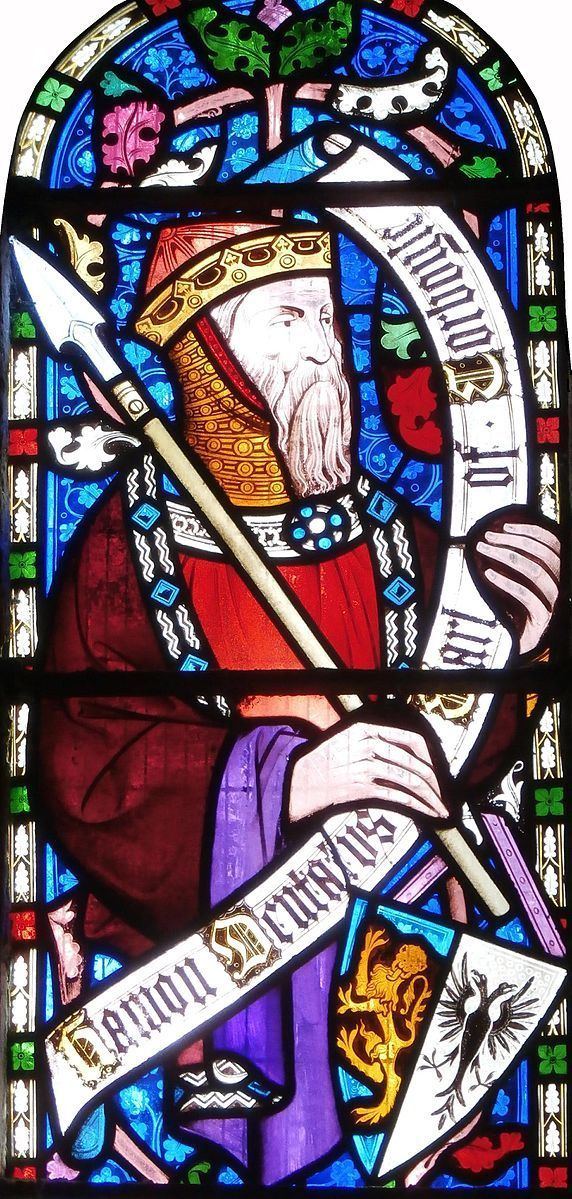Parents Mauger, Count of Corbeil Great-grandparent William I Longsword | Children Hamo Dapifer | |
 | ||
Grandparents Richard I of Normandy, Gunnora Similar Robert Fitzhamon, Richard I of Normandy, Gunnora | ||
Hamon Dentatus (d. circa 1047) was a Norman noble who held the lordship of Torigni-sur-Vire, Manche, in Normandy. Hamon Dentatus rebelled against Duke William, later William the Conqueror, and died in about 1047. His Latin epithet Dentatus signifies "betoothed" or "toothy". Little is known about his life other than his progeny.
Contents
Origins
The origins of Hamon Dentatus de Crevecoeur are unknown, although various suggestions have been made. Rev. Roger Granville in his 1895 work History of the Granville Family stated without any source or rationale being given, that he was a younger son of Mauger, jure uxoris Count of Corbeil, himself a younger son of Richard, Duke of Normandy, grandson of Rollo. This pedigree appeared to Round to have been "hatched in the seventeenth century" (by the Granville family) "...wishing to exalt Hamon Dentatus" (of whom they claimed to be heirs male and heirs to the supposed Norman "Earldom of Corbeil").
Titles held
He is supposed to have held the titles "Count/Earl of Corboile/Corboyle/Corbeuil", and "Lord of Thorigny and Granville", all in Normandy. These titles were confirmed retroactively by King Charles II in 1661 in his royal warrant which elevated to the peerage John Granville, 1st Earl of Bath (1628-1701), of Stowe, Kilkhampton. The text of the warrant is as follows:
"Whereas it appears unto us that our right trusty and right well-beloved cousin John, Earl of Bath, Our Grome of the Stole and First Gentleman of our Bedchamber, derives his title in a direct line as heir male unto Robert FitzHamon, Lord of Gloucester and Glamorgan in the reignes of King William the Conqueror, King William Rufus and King Henry the First, and who was the son and heir of the Lord Hamon dentatus, Earle of Corboile and Lord of Thorigny and Granville in Normandy, whereby he justly claims his descent from the younger son, as we ourself do from the eldest, of Rollo the first Duke of Normandy our com'on ancestor. In consideration whereof...we are graciously pleased to promise and declare that in case the Earldom of Glamorgan should at any time fall into the hands of the Crown during our reigne...we will not again confer the said earldom upon any other family but restore (sic) the same to that of the Granvilles by creating the said present Earl of Bath also Earl of Glamorgan...and we are further graciously pleased for the considerations aforesaid to allow and permit the said Earl of Bath to use also these other titles of honour as Earls of Corboile, Thorigny and Granville, as was formerly done by his ancestors and though the same has been discontinued of late by some of his said ancestors yet we do hereby give full power and authority to the said Earl of Bath, not only for himself and his posterity to use the same, but in case he shall hereafter erect in memory of his father or any other his former ancestors any monument or inscription concerning him or them, to use the name stile and dignity of Earle of Corboile, Thorigny and Granville, in as full and ample a manner as his said ancestors formerly and before Normandy was lost from the Crown of England, the said family of Granville being then also sufferers with the Crown and then also dispossessed for their loyalty out of their said inheritance of the said Earldom and Lordships within the said Dutchy of Normandy".
Progeny
He left progeny including:
Traditional pedigrees of the Grenville (post 1661 "Granville") family of Stowe in the parish of Kilkhampton in Cornwall and of Bideford in Devon, dating from the 17th century when the family was raised to the Earldom of Bath erroneously gave the father of Robert FitzHamon (the most famous of the Hamo family) as Hamon Dentatus and omitted any mention of his true father Hamo Dapifer. This was despite William of Malmesbury having described Hamo Dentatus as avus ("grandfather") to Robert FitzHamon. The erroneous descent was given official status when recited in the royal warrant signed in 1661 by King Charles II creating titles of nobility for John Granville, 1st Earl of Bath (1628-1701).
Kilkhampton depiction
An imaginary depiction of Hamon Dentatus, together with many other supposed and actual Granville family ancestors, is shown in a series of two stained glass windows erected in 1860 in the Granville Chapel in the Church of St James the Great, Kilkhampton, Cornwall, in which parish was situated the Grenville seat of Stowe. The window was erected by his supposed heirs male of the Grenville family (supposedly descended from Richard I de Grainville (d.post 1142) of Neath Castle in Glamorgan, one of the Twelve Knights of Glamorgan, the supposed younger son of Hamo Dapifer and younger brother of Robert FitzHamon the conqueror of Glamorgan): George Granville Sutherland-Leveson-Gower, 2nd Duke of Sutherland KG (1786-1861); John Alexander Thynne, 4th Marquess of Bath (1831–1896); George Granville Francis Egerton, 2nd Earl of Ellesmere (1823–1862); Lord John Thynne (1798-1881), DD, Canon of Westminster, a younger son of Thomas Thynne, 2nd Marquess of Bath (1765-1837), KG.
